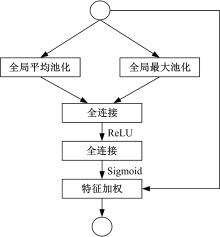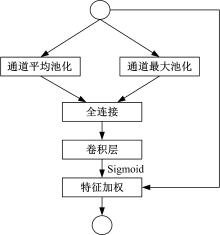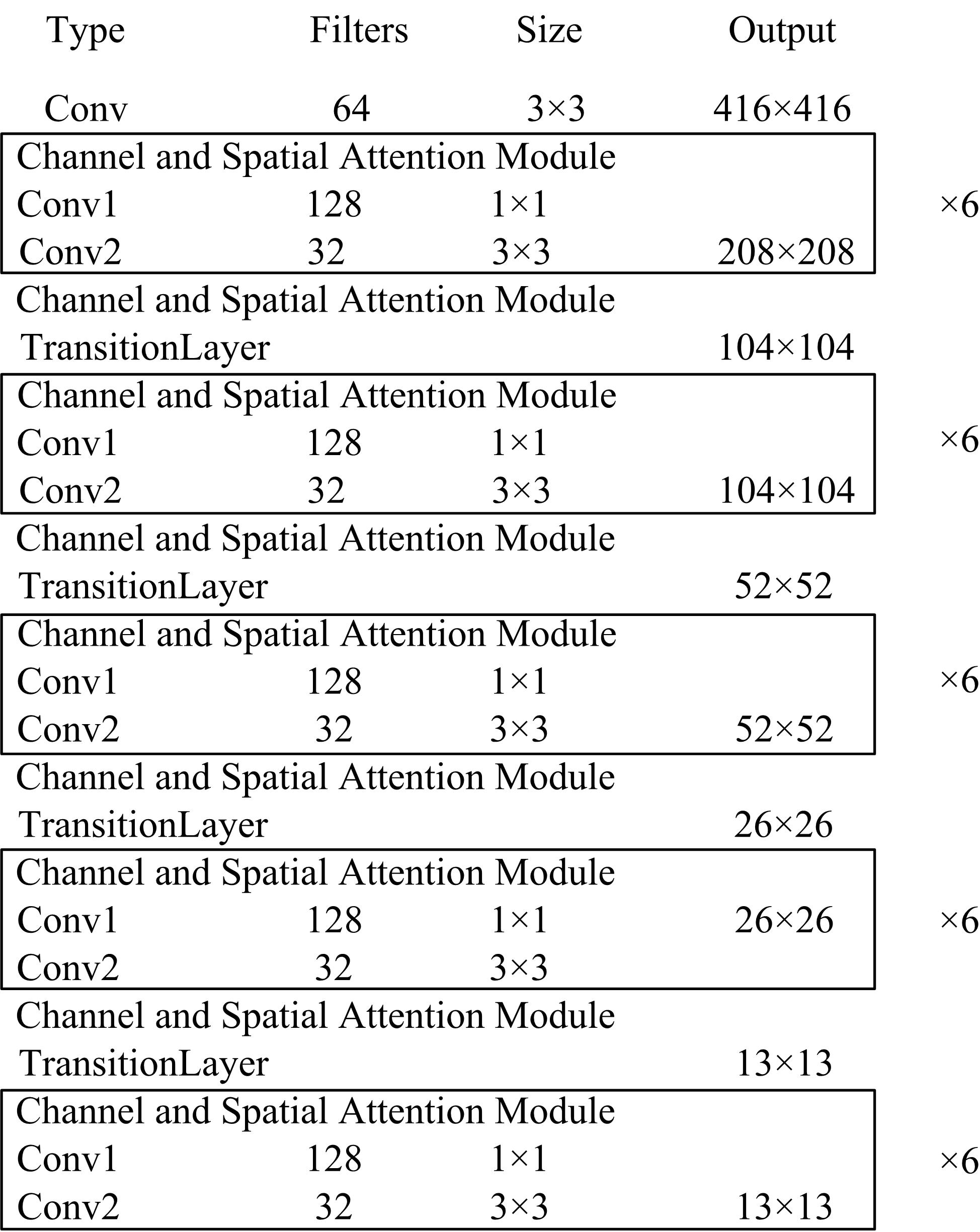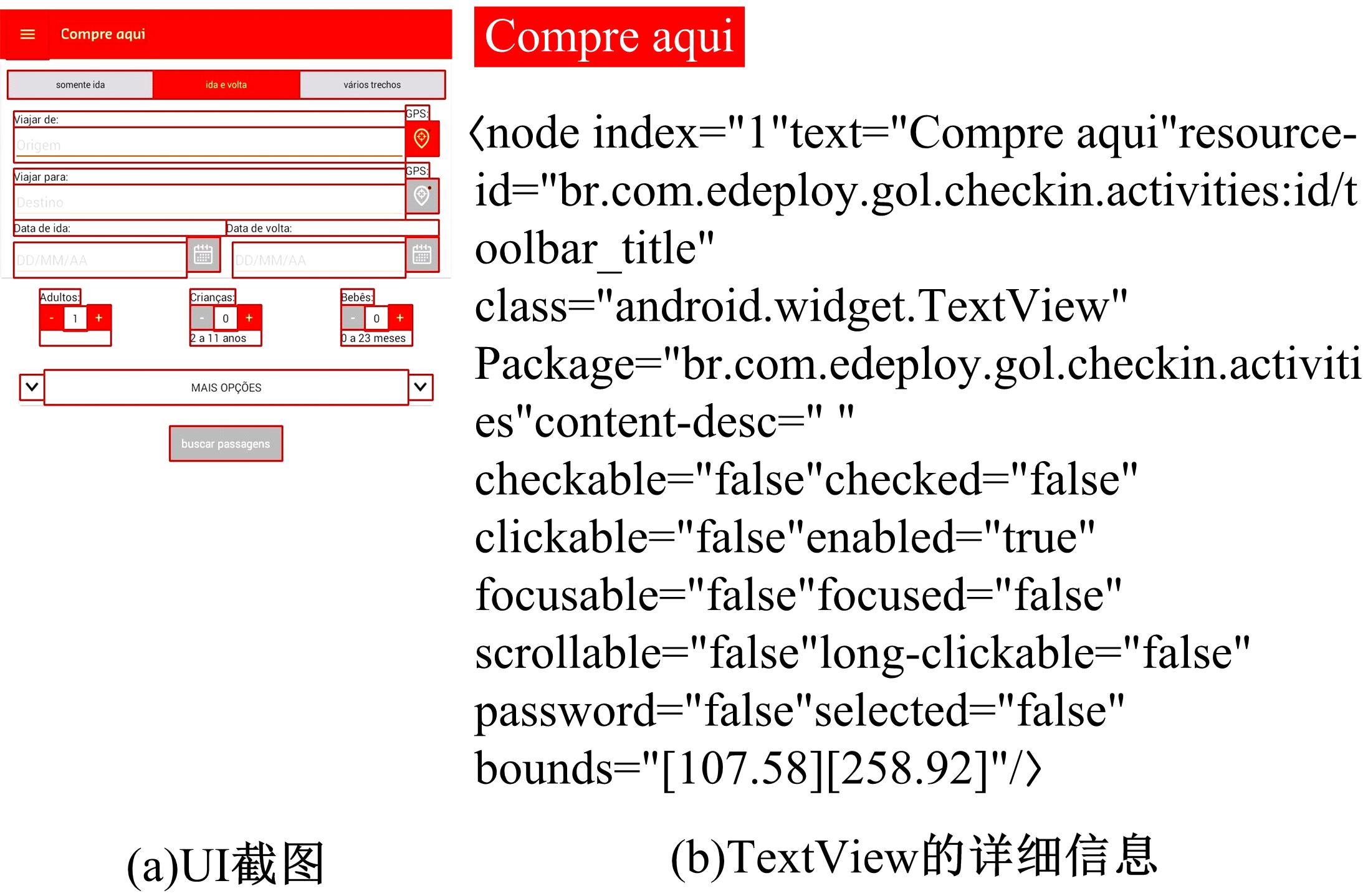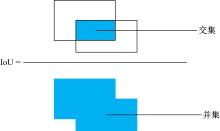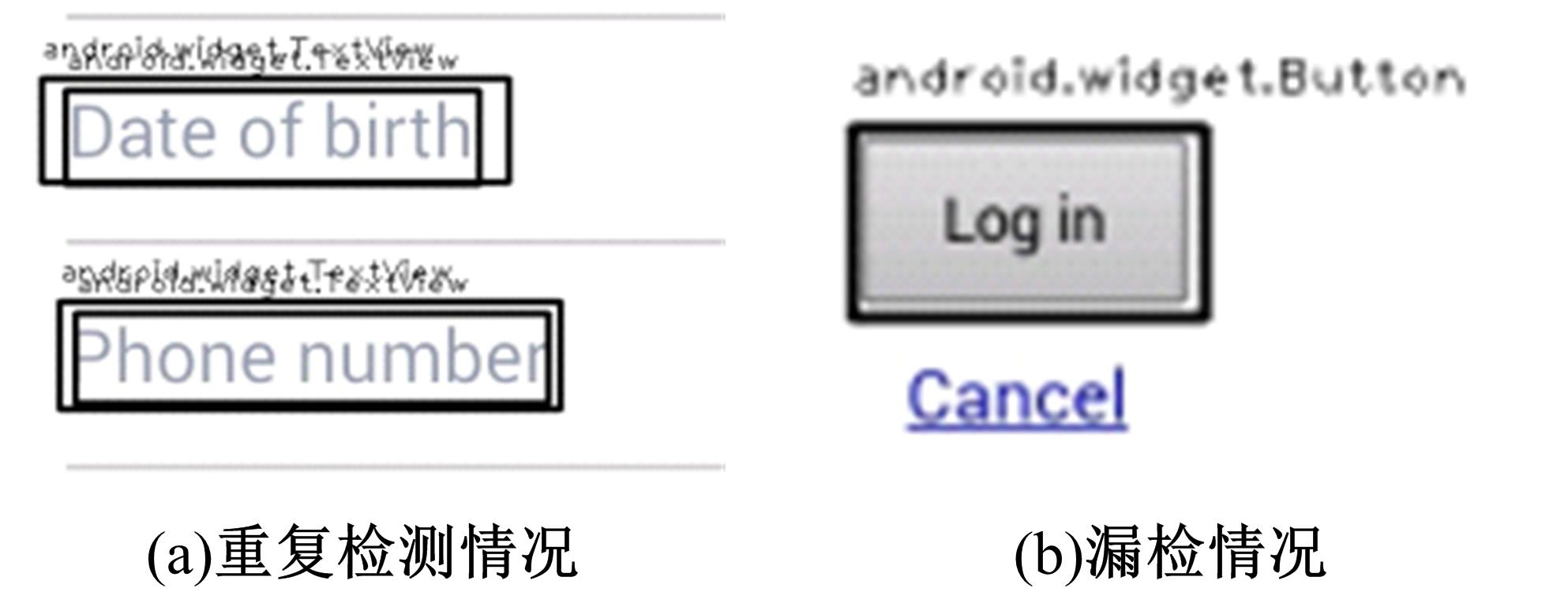吉林大学学报(工学版) ›› 2021, Vol. 51 ›› Issue (3): 1026-1033.doi: 10.13229/j.cnki.jdxbgxb20200058
• 计算机科学与技术 • 上一篇
基于YOLOv3改进的用户界面组件检测算法
刘元宁1,2( ),吴迪1,2,朱晓冬1,2(
),吴迪1,2,朱晓冬1,2( ),张齐贤1,3,李双双1,2,郭书君1,2,王超1,3
),张齐贤1,3,李双双1,2,郭书君1,2,王超1,3
- 1.吉林大学 符号计算与知识工程教育部重点实验室,长春 130012
2.吉林大学 计算机科学与技术学院,长春 130012
3.吉林大学 软件学院,长春 130012
User interface components detection algorithm based on improved YOLOv3
Yuan-ning LIU1,2( ),Di WU1,2,Xiao-dong ZHU1,2(
),Di WU1,2,Xiao-dong ZHU1,2( ),Qi-xian ZHANG1,3,Shuang-shuang LI1,2,Shu-jun GUO1,2,Chao WANG1,3
),Qi-xian ZHANG1,3,Shuang-shuang LI1,2,Shu-jun GUO1,2,Chao WANG1,3
- 1.Key Laboratory of Symbolic Computation and Knowledge Engineering,Ministry of Education,Jilin University,Changchun 130012,China
2.College of Computer Science and Technology,Jilin University,Changchun 130012,China
3.College of Software,Jilin University,Changchun 130012,China
摘要:
针对传统方法识别用户界面(UI)组件时,无法进行组件分类的问题,本文提出了基于经典目标检测算法YOLOv3改进的算法用于UI组件检测任务,包括识别和分类。特征提取网络采用DenseNet紧密连接结构使提取到的特征能够充分使用;在特征提取网络中加入通道注意力机制和空间注意力机制,使用加权的特征代替原来的特征用于后面的特征融合;构造4个维度的特征金字塔网络完成组件检测任务;使用Focalloss作为分类损失函数。在收集的真实UI数据集上进行实验,实验结果表明:在检测精度上,本文方法的召回率达到了91.97%,平均精度mAP达到了48.21%,相比传统检测方法,本文方法具有更好的性能。
中图分类号:
- TP391.4
| 1 | Nguyen T A, Reverse C C. Engineering mobile application user interfaces with REMAUI[C]∥IEEE/ACM International Conference on Automated Software Engineering, Lincoln, United States, 2015: 248-259. |
| 2 | Swearngin A, Dontcheva M, Li W, et al. Rewire: interfade design assistance from examples[C]∥Proceedings of the 2018 CHI Conference on Human Factors in Computing Systems, Montreal QC, Canada, 2018:No.504. |
| 3 | White T D, Fraser G, Brown G J. Improving random GUI testing with image-based widget detection[C]∥Proceedings of the 28th ACM SIGSOFT International Symposium on Software Testing and Analysis, New York, NY, USA, 2019: 307-317. |
| 4 | Redmon J, Farhadi A. YOLO9000: better, faster, stronger[C]∥2017 IEEE Conference on Computer Vision and Pattern Recognition, Honolulu, 2017: 6517-6525. |
| 5 | Redmon J, Farhadi A. YOLOv3: an incremental improvement[DB/OL].[2020-01-12]. |
| 6 | He Kai-ming, Zhang Xiang-yu, Ren Shao-qing, et al. Deep residual learning for image recognition[C]∥Proceedings of the IEEE Conference on Computer Vision and Pattern Recognition, Vegas, Nevada, 2016:770-778. |
| 7 | Huang Gao, Liu Zhuang, van der Maaten Laurens, et al. Densely connected convolutional networks[C]∥2017 IEEE Conference on Computer Vision and Pattern Recognition, Honolulu, 2017: 2261-2269. |
| 8 | Redmon J, Divvala S, Girshick R, et al. You only look once: unified, real-time object detection[C]∥2016 IEEE Conference on Computer Vision and Pattern Recognition, Las Vegas, Nevada, 2016:779-788. |
| 9 | Girshick R, Donahue J, Darrell T, et al. Rich feature hierarchies for accurate object detection and semantic segmentation[C]∥Proceedings of the IEEE Conference on Computer Vision and Pattern Recognition, Columbus, Ohio, 2014:580-587. |
| 10 | Girshick R. Fast R-CNN[C]∥IEEE International Conference on Computer Vision, Santiago, Chile, 2015: 1440-1448. |
| 11 | Ren S Q, He K M, Girshick R, et al. Faster R-CNN: towards real-time object detection with region proposal networks[J]. IEEE Transactions on Pattern Analysis & Machine Intelligence, 2017, 39(6):1137-1149. |
| 12 | 耿庆田,于繁华,王宇婷,等. 基于特征融合的车型检测新算法[J]. 吉林大学学报:工学版, 2018, 48(3):929-935. |
| Geng Qing-tian, Yu Fan-hua, Wang Yu-ting, et al. New algorithm for vehicle type detection based on feature fusion[J]. Journal of Jilin University (Engineering and Technology Edition), 2018, 48(3):929-935. | |
| 13 | Lin T Y, Goyal P, Girshick R, et al. Focal loss for dense object detection[C]∥Proceedings of the IEEE International Conference on Computer Vision, Venice, Italy, 2017: 2999-3007. |
| 14 | Hu Jie, Shen Li, Albanie S, et al. Squeeze-and-excitation networks[J]. IEEE Transactions on Pattern Analysis and Machine Intelligence, 2017,1:01507. |
| 15 | Sanghyun W, Jongchan P, Joon-Young L, et al. CBAM:convolutional block attention module[J]. Springer, 2018, 11211:3-19. |
| 16 | 车翔玖,王利,郭晓新. 基于多尺度特征融合的边界检测算法[J]. 吉林大学学报:工学版, 2018, 48(5):1621-1628. |
| Che Xiang-jiu, Wang Li, Guo Xiao-xin. Improved boundary detection based on multi-scale cues fusion[J]. Journal of Jilin University (Engineering and Technology Edition), 2018, 48(5):1621-1628. | |
| 17 | Lin T Y, Dollar P, Girshick R, et al. Feature pyramid networks for object detection[C]∥2017 IEEE Conference on Computer Vision and Pattern Recognition, Honolulu, 2017: 936-944. |
| [1] | 朱小龙,谢忠. 基于机器学习的地理空间数据抽取算法[J]. 吉林大学学报(工学版), 2021, 51(3): 1011-1016. |
| [2] | 欧阳丹彤,刘扬,刘杰. 故障响应指导下基于测试集的故障诊断方法[J]. 吉林大学学报(工学版), 2021, 51(3): 1017-1025. |
| [3] | 魏晓辉,周长宝,沈笑先,刘圆圆,童群超. 机器学习加速CALYPSO结构预测的可行性[J]. 吉林大学学报(工学版), 2021, 51(2): 667-676. |
| [4] | 周炳海,吴琼. 基于多目标的机器人装配线平衡算法[J]. 吉林大学学报(工学版), 2021, 51(2): 720-727. |
| [5] | 顾天奇,胡晨捷,涂毅,林述温. 基于移动最小二乘法的稳健重构方法[J]. 吉林大学学报(工学版), 2021, 51(2): 685-691. |
| [6] | 许骞艺,秦贵和,孙铭会,孟诚训. 基于改进的ResNeSt驾驶员头部状态分类算法[J]. 吉林大学学报(工学版), 2021, 51(2): 704-711. |
| [7] | 王小玉,胡鑫豪,韩昌林. 基于生成对抗网络的人脸铅笔画算法[J]. 吉林大学学报(工学版), 2021, 51(1): 285-292. |
| [8] | 方明,陈文强. 结合残差网络及目标掩膜的人脸微表情识别[J]. 吉林大学学报(工学版), 2021, 51(1): 303-313. |
| [9] | 赵海英,周伟,侯小刚,张小利. 基于多任务学习的传统服饰图像双层标注[J]. 吉林大学学报(工学版), 2021, 51(1): 293-302. |
| [10] | 宋元,周丹媛,石文昌. 增强OpenStack Swift云存储系统安全功能的方法[J]. 吉林大学学报(工学版), 2021, 51(1): 314-322. |
| [11] | 赵宏伟,刘晓涵,张媛,范丽丽,龙曼丽,臧雪柏. 基于关键点注意力和通道注意力的服装分类算法[J]. 吉林大学学报(工学版), 2020, 50(5): 1765-1770. |
| [12] | 管乃彦,郭娟利. 基于姿态估计算法的组件感知自适应模型[J]. 吉林大学学报(工学版), 2020, 50(5): 1850-1855. |
| [13] | 李阳,李硕,井丽巍. 基于贝叶斯模型与机器学习算法的金融风险网络评估模型[J]. 吉林大学学报(工学版), 2020, 50(5): 1862-1869. |
| [14] | 周炳海,何朝旭. 基于线边集成超市的混流装配线动态物料配送调度[J]. 吉林大学学报(工学版), 2020, 50(5): 1809-1817. |
| [15] | 蒋磊,管仁初. 基于多目标进化算法的人才质量模糊综合评价系统设计[J]. 吉林大学学报(工学版), 2020, 50(5): 1856-1861. |
|
||
